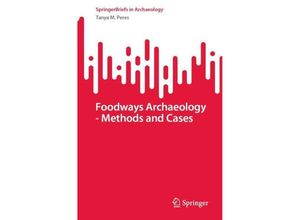This volume presents an overview of methodologies to identify and study foodways in the
archaeological record. It also includes definitions information and examples for students and
professionals to understand the basic analytical approaches methods and themes critical to
archaeological studies of foodways. One of the main goals of this book is to show that foodways
can help us better understand many aspects of a culture and can be studied from the material
culture recovered from archaeological sites. It is important to stress that foodways are and
should be studied by more than zooarchaeologists and paleoethnobotanists. Foodways encompass
the biological and cultural need for sustenance and thus are a research area that incorporates
a multitude of artifact types analytical specialties and research questions.Foodways are a
tangled web of ideas and behaviors that structure diet subsistence strategies cuisines and
the use of food to express identity. While foodstuffs are primary components to foodways the
consumption of material foods is inherently social. Food dishes and cuisines are expressions
of the people culture and time in which they are created. Foodways Archaeology is devoted
specifically to the archaeological study of the intersection of food culture history and
traditions as viewed in the archaeological record.



